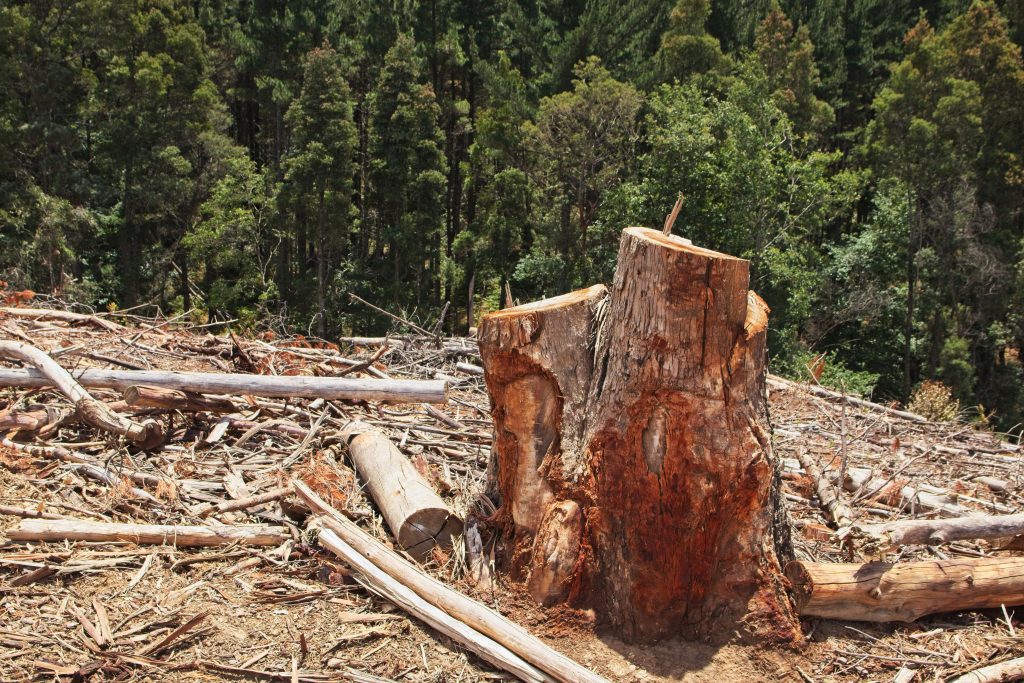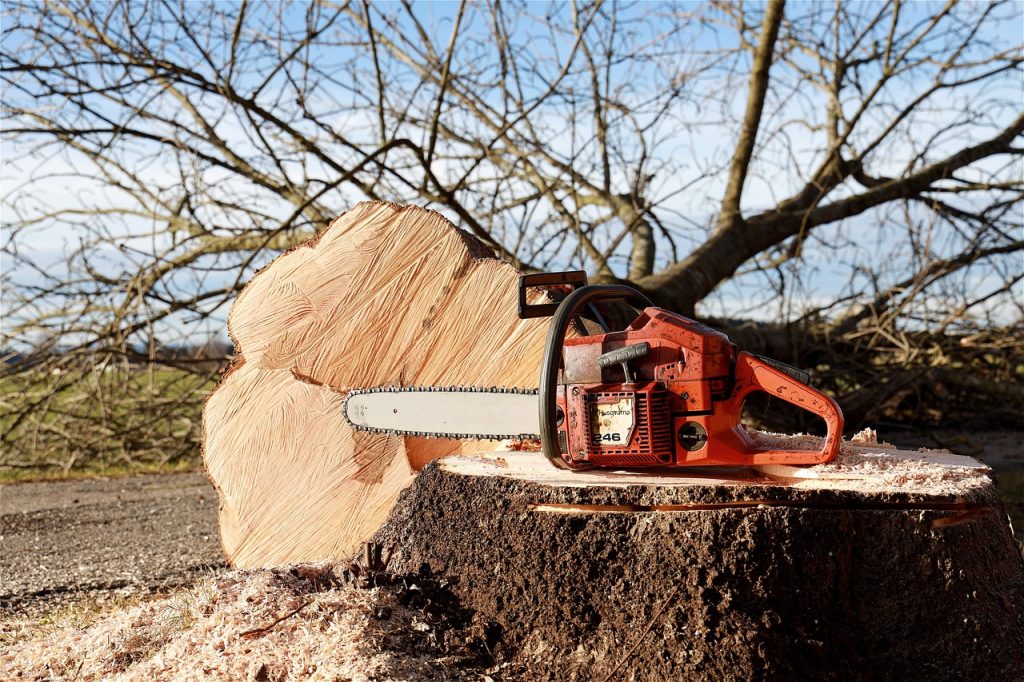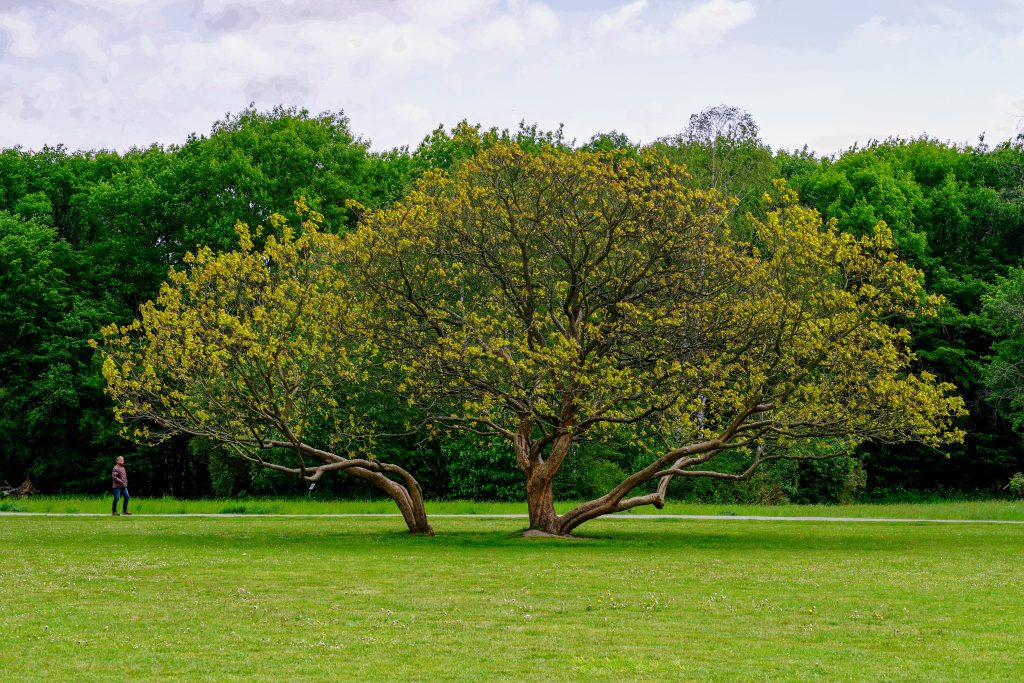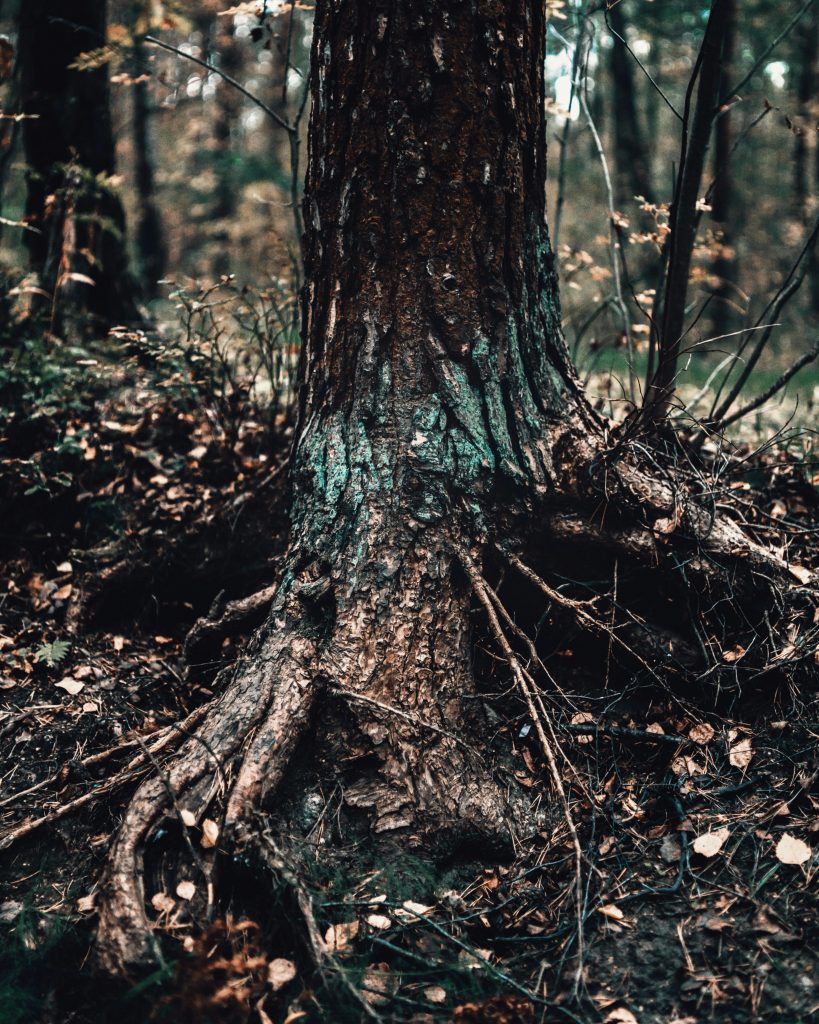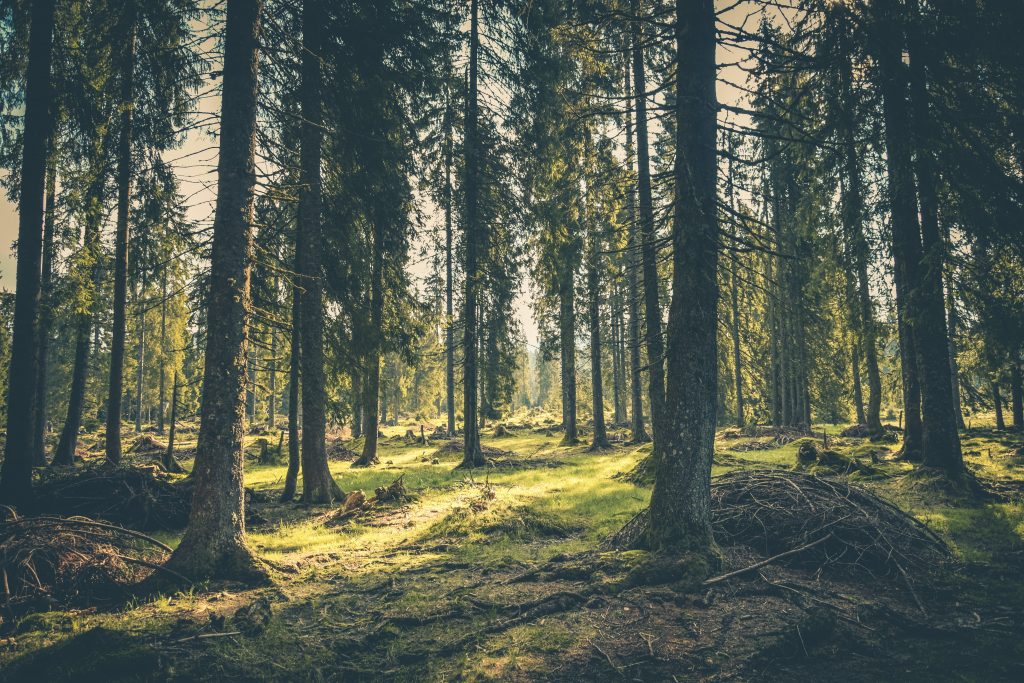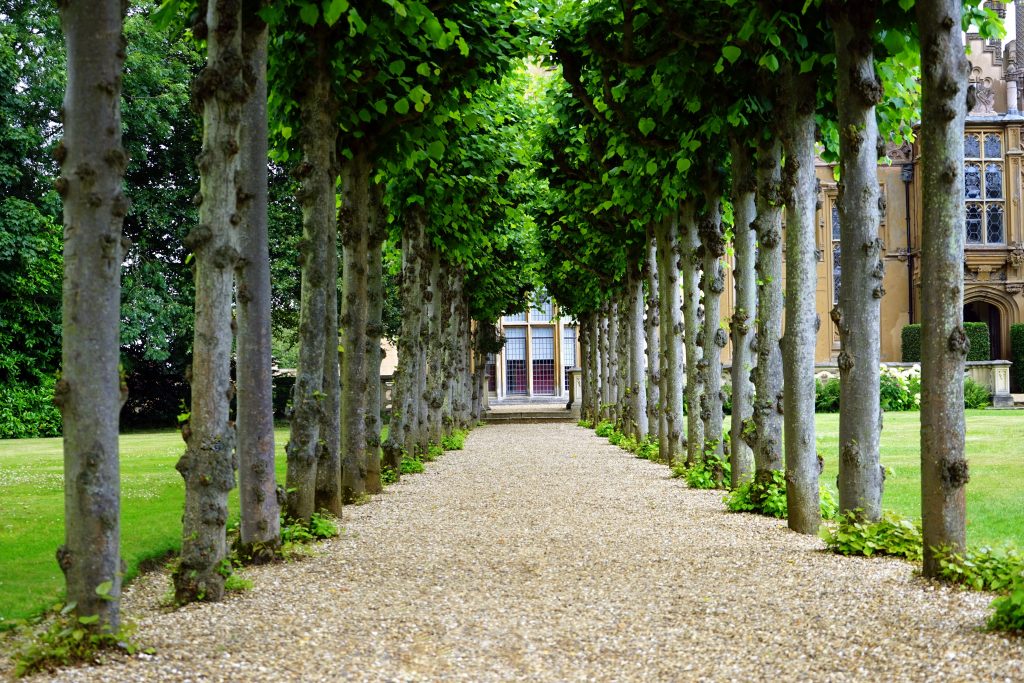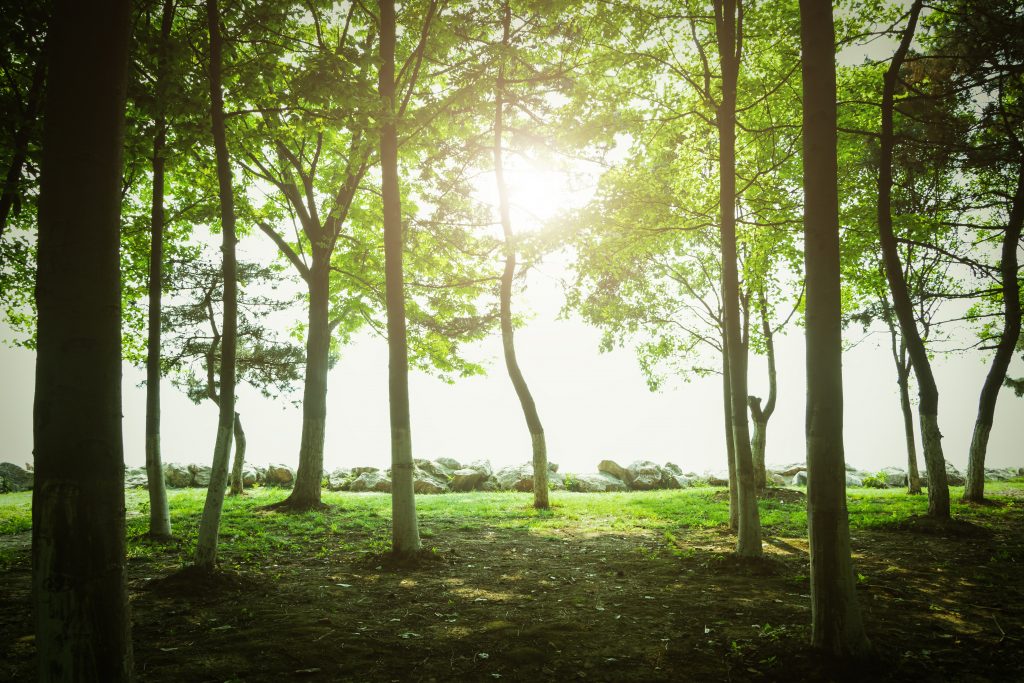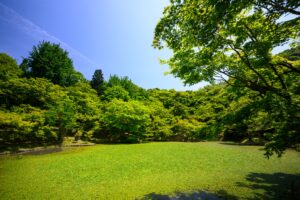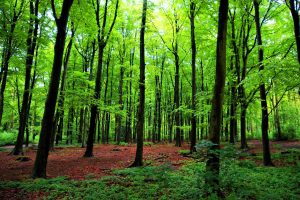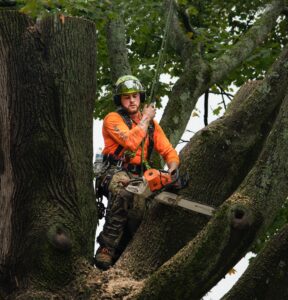How Much for One Tree Removal Sandy Utah?
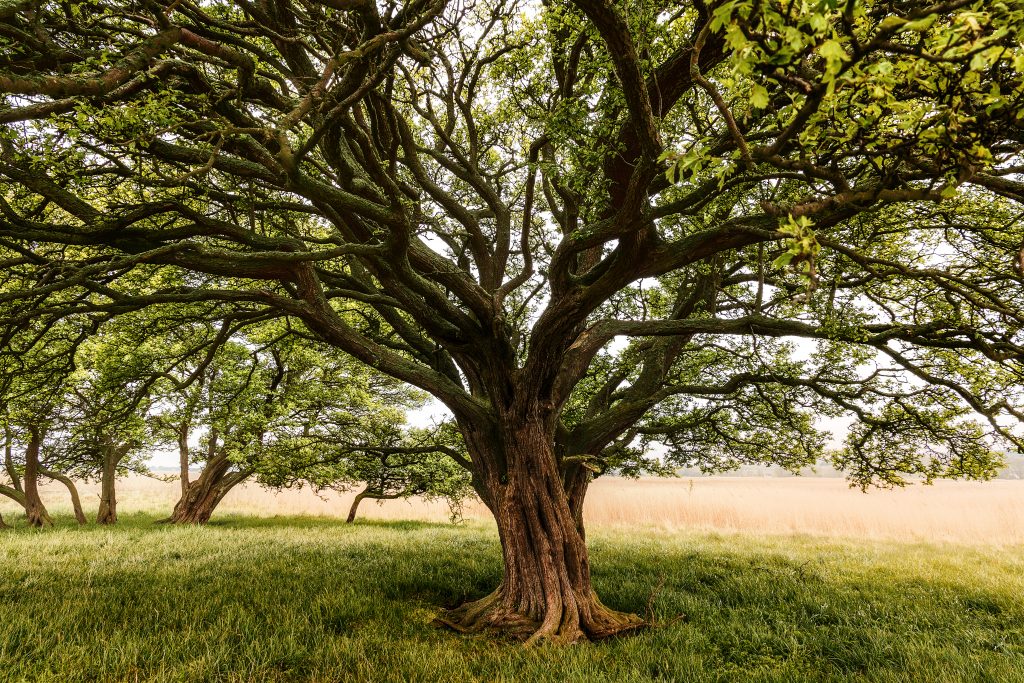
Are you tired of that pesky tree blocking your view in Sandy, Utah? Well, fret no more! In this article, we will delve into the world of tree removal services and uncover the answer to your burning question: how much will it cost to get rid of that tree once and for all? With our knowledgeable and precise style, we will provide you with tips, dos and don’ts, and the key steps for safe and efficient tree removal. So, let’s get started on reclaiming your beautiful view!
Key Takeaways
- Tree removal services in Sandy, Utah have a rich history and have evolved with advancements in technology and equipment.
- Hiring professional arborists for tree removal ensures expertise in techniques, minimal environmental impact, and proper disposal of tree debris.
- When considering tree removal, it is important to compare costs and pricing options from multiple companies and consider additional services and their costs.
- DIY tree removal can be dangerous and should only be attempted after assessing potential dangers, having the necessary equipment, and evaluating the surrounding area for risks. Hiring professional tree removal services is recommended for large and hazardous trees.
Introduction to Tree Removal Services
Tree removal services are a great option for homeowners who want to safely and efficiently remove trees from their property. Whether you have a diseased tree that poses a risk to your home or you simply want to clear space for a new construction project, tree removal services can help you get the job done. Here are three reasons why you should consider hiring professionals for tree removal:
- Expertise in tree removal techniques: Tree removal is a complex process that requires specialized knowledge and skills. Professional tree removal services have the expertise to assess the condition of the tree, determine the best approach for removal, and safely execute the process. They use techniques like tree climbing, rigging, and cutting to ensure efficient and safe removal.
- Minimal environmental impact: Tree removal can have a significant impact on the environment if not done properly. Professional tree removal services prioritize minimizing the environmental impact of their work. They follow industry best practices to ensure that the surrounding vegetation, wildlife, and soil are protected during the removal process.
- Proper disposal of tree debris: After the tree is removed, there is often a large amount of debris to be dealt with. Tree removal services take care of the entire process, including the disposal of tree debris. They have the necessary equipment to safely and efficiently remove the debris from your property, leaving it clean and ready for use.
With their expertise, focus on minimizing environmental impact, and comprehensive service, tree removal services are the ideal choice for homeowners looking to remove trees from their property. Now let’s delve into the fascinating history of tree removal services and how they have evolved over time.
History of Tree Removal Services
In Sandy, Utah, you’ll find a rich history of tree removal services that have been providing efficient and reliable solutions for years. The history of tree removal techniques in this area can be traced back to the early days of settlement, where trees were often cleared to make way for agriculture and development. Initially, manual labor was used, with axes and saws being the primary tools. As technology advanced, so did the methods of tree removal. Chainsaws became more commonly used, allowing for faster and more precise cutting. In recent years, specialized equipment such as cranes and bucket trucks have been utilized to remove trees safely and efficiently.
It’s important to consider the environmental impact of tree removal. While trees provide numerous benefits, such as shade and improved air quality, there are situations where removal is necessary. When a tree is diseased, dead, or poses a safety hazard, removal may be the best course of action. However, it’s crucial to minimize the impact on the surrounding environment and ecosystem. Replanting trees in the same area or elsewhere can help offset the loss and maintain the balance of nature.
Now that you understand the history and environmental considerations of tree removal, let’s move on to some tips for finding the right tree removal service in Sandy, Utah.
Tips
When it comes to tree removal, you have several cost comparison options to consider. You can choose to do it yourself, which can save you money but requires proper tools and expertise. Alternatively, you can hire professional arborists who have the experience and equipment necessary to safely remove trees.
Cost Comparison Options
You can save money by comparing the costs of different options for tree removal in Sandy, Utah. When it comes to tree removal, the price can vary depending on several factors. It is essential to consider cost comparison and pricing options to ensure you are getting the best deal. Start by contacting multiple tree removal companies in Sandy, Utah, and request a quote. Compare the prices they offer and consider what services are included in the cost. Some companies may provide additional services like stump removal or debris cleanup, while others may charge extra for these. By carefully comparing the options and pricing, you can find a reputable tree removal service that fits your budget. Transitioning into the next section about ‘diy tree removal,’ it’s crucial to be aware of the risks involved.
DIY Tree Removal
To safely remove a tree on your own, it’s important to assess the potential dangers and have the necessary equipment. DIY tree removal can be a cost-effective option, but it requires careful planning and adherence to safety precautions. Before starting the process, make sure you have the proper tools, such as a chainsaw, pruning shears, and a sturdy ladder. Additionally, wearing protective gear, like gloves, goggles, and a helmet, is crucial to prevent injuries. Always evaluate the surrounding area for any power lines, structures, or obstacles that may pose a risk during the removal process. Remember to carefully study the tree’s condition and size to determine the appropriate cutting techniques. However, if you are uncertain or the tree is large and hazardous, it’s best to hire professional arborists who have the expertise and specialized equipment to safely remove the tree.
Hiring Professional Arborists
If you’re unsure about the condition of the tree or if it poses a hazard, it’s best to hire professional arborists who have the expertise and specialized equipment. Arborists are trained professionals who specialize in the care and maintenance of trees. They possess extensive knowledge about tree biology, diseases, and proper pruning techniques. When you hire professional arborists, you can benefit from their expertise in assessing the health of your tree and determining the best course of action. They can also provide valuable advice on tree maintenance and preservation. Additionally, professional arborists have the necessary equipment to safely and efficiently remove trees if needed. Hiring professionals ensures that the job is done properly and reduces the risk of accidents or damage. Now, let’s explore the traits of professional tree removal services.
Traits of Professional Tree Removal Services
When hiring professional tree removal services, it’s essential to look for traits such as experience, certifications, and positive customer reviews. These traits are indicative of professional expertise and a commitment to customer satisfaction. Experienced tree removal professionals have the knowledge and skills necessary to handle even the most challenging tree removal jobs. They understand the intricacies of tree biology and can assess the health and stability of a tree before removal. Additionally, certifications such as those from the International Society of Arboriculture (ISA) demonstrate a commitment to industry standards and best practices.
Positive customer reviews are another crucial factor to consider when hiring tree removal services. These reviews provide insight into the experiences of previous customers and can give you confidence in the professionalism and quality of the service provider. Look for reviews that highlight the promptness, efficiency, and cleanliness of the tree removal process.
Steps for Safe and Efficient Tree Removal
Start by assessing the size and location of the tree to determine the best approach for safe and efficient removal. When it comes to tree removal, there are several cost-effective options available to you. Here are three key factors to consider:
- Type of equipment needed: Depending on the size and condition of the tree, different equipment may be required. This can include chainsaws, ropes, and safety gear. Assessing the equipment needed beforehand will help ensure that the removal process is carried out smoothly.
- Tools required for disposal: Once the tree is cut down, the next step is to dispose of the debris. This may involve using a wood chipper or a truck for hauling away the branches and logs. Knowing the tools required for disposal will help you plan and budget accordingly.
- Safety measures to be taken: Tree removal can be a dangerous task, so it’s important to prioritize safety. This may involve using harnesses and ropes to secure yourself while working at heights, as well as taking precautions to protect nearby structures and people.
Goals
The main goal of tree removal is to safely and efficiently eliminate a tree that poses a risk or is no longer desired in a specific location. When considering tree removal, it is important to conduct a cost analysis to determine the financial implications. Factors such as the size of the tree, its location, and accessibility can influence the cost. Additionally, it is crucial to consider the environmental impact of tree removal. Trees play a vital role in the ecosystem, providing oxygen, shade, and habitat for wildlife. Removing a tree can disrupt this delicate balance and impact the surrounding environment. However, there are instances where tree removal is necessary, such as when a tree is diseased, dead, or poses a safety hazard. In these cases, it is important to hire professionals who have the expertise and equipment to safely carry out the removal. By understanding the cost analysis and environmental impact, you can make informed decisions about tree removal. Transitioning into the subsequent section about habits for efficient tree removal, it is essential to adopt practices that ensure the process is carried out smoothly and effectively.
Habits for Efficient Tree Removal
To efficiently remove a tree, it’s important to hire experienced professionals who can safely carry out the process. They have the knowledge and skills to use efficient methods and cost-saving techniques. One such method is using a crane to lift and remove large trees. By using a crane, the professionals can safely and quickly remove the tree without causing damage to surrounding structures or landscapes. Another efficient method is the use of specialized equipment such as stump grinders, which can quickly grind down tree stumps, eliminating the need for manual labor and saving time and effort. Additionally, experienced professionals can assess the tree and determine if it can be salvaged or if it needs to be completely removed. This assessment can save costs by avoiding unnecessary removals. By hiring professionals who are knowledgeable in these efficient methods and cost-saving techniques, you can ensure that your tree removal is done safely and efficiently.
Now let’s delve into a real-life story that demonstrates the importance of hiring professionals for tree removal.
A Real-Life Story
When you hire experienced professionals for tree removal, you’ll have peace of mind knowing that the job will be done safely and efficiently. Let me share a real-life story to illustrate the importance of hiring professionals. A couple of years ago, my neighbor decided to remove a tree from their backyard on their own. Armed with just a chainsaw and little knowledge, they faced numerous challenges. First, they underestimated the size and weight of the tree, making it difficult to control during the removal process. Second, they struggled with proper cutting techniques, as improper cuts led to branches falling in unpredictable directions. Lastly, they encountered difficulties in disposing of the tree debris, as they had to find a way to transport and dispose of it responsibly. In the end, they spent more time, effort, and money than they initially anticipated. By hiring professionals, you can avoid such challenges and ensure a safe and efficient tree removal process. Now, let’s move on to discussing the next section, where we’ll explore the importance of getting quotes before hiring a tree removal service.
Quotes
Getting quotes from multiple tree removal services is a smart way to compare prices and ensure you’re getting the best deal. When it comes to tree removal, the cost estimation can vary based on several factors, such as the size and location of the tree, the complexity of the job, and the equipment required. It is important to gather quotes from different tree removal services to get an idea of the price range in your area.
When requesting quotes, be sure to provide accurate information about the tree, including its height, diameter, and any potential obstacles nearby. This will help the tree removal services give you a more accurate cost estimation. It is also a good idea to ask for any additional charges that may apply, such as stump removal or debris disposal.
By obtaining multiple quotes, you can compare the prices and services offered by different tree removal companies. This will allow you to make an informed decision and choose the best option for your needs and budget. Keep in mind that the lowest price may not always be the best choice, as quality and reliability are also important factors to consider.
Now that you have gathered your quotes and have a better understanding of the cost estimation, it’s time to uncover some secrets to ensure a smooth and successful tree removal process.
Secrets
Now that you’ve gathered your quotes, it’s important to consider the quality and reliability of the tree removal companies before making a decision. When it comes to tree removal techniques, you want to ensure that the company you choose is equipped with the right tools and expertise to handle the job safely and efficiently. Look for companies that have trained professionals who are knowledgeable about the different techniques involved in tree removal.
In addition to considering the techniques used, it’s also crucial to be aware of any hidden costs that may arise during the process. Some tree removal companies may try to add extra charges for services that should be included in the initial quote. Take the time to carefully review the quote and ask the company about any potential hidden costs before making a final decision.
By considering both the quality of the techniques used and the potential for hidden costs, you can make a more informed decision about which tree removal company to choose. This will ensure that you are getting the best value for your money and that the job is done safely and efficiently.
Transitioning to the next section about ‘insights on tree removal services,’ it’s important to have a clear understanding of what to expect from the companies you are considering.
Insights on Tree Removal Services
As you explore different tree removal services, it’s essential to gain insights into their qualifications and experience. When it comes to pricing, it’s crucial to understand that the cost of tree removal can vary depending on various factors such as the size of the tree, its location, and the complexity of the job. To get accurate pricing information, it’s recommended to contact multiple tree removal companies in Sandy, Utah, and request a detailed quote. This will give you a better idea of the average cost and help you make an informed decision.
In addition to pricing, customer testimonials can provide valuable insights into the quality of service provided by tree removal companies. Reading reviews and testimonials from previous customers can give you an idea of the company’s professionalism, reliability, and customer satisfaction. Look for companies with positive feedback and high ratings, as this indicates a track record of delivering excellent service.
Benefits of Tree Removal Services
Hiring a professional tree removal service can greatly enhance the safety and aesthetics of your property. There are several reasons why you should consider hiring a professional for this job. First and foremost, professionals have the knowledge and expertise to safely remove trees without causing any damage to your property or nearby structures. They are trained in the proper techniques and have the necessary equipment to handle any tree removal job, no matter how big or small.
Another advantage of hiring a professional tree removal service is that they can help improve the overall aesthetics of your property. Trees that are diseased, damaged, or overgrown can be an eyesore and negatively impact the curb appeal of your home. By removing these trees, you can create a more visually appealing landscape that will enhance the value and attractiveness of your property.
In addition to safety and aesthetics, there are other advantages to hiring a professional tree removal service. They can help you save time and effort by taking care of all the necessary permits and paperwork required for tree removal. They can also ensure that the entire process is completed efficiently and effectively, leaving you with a clean and clear space.
By hiring a professional tree removal service, you can enjoy the benefits of a safer and more beautiful property. So, if you have any trees that need to be removed, consider reaching out to a professional who can handle the job with expertise and precision.
Now, let’s move on to some valuable lessons about tree removal.
Lessons
When it comes to tree removal, there are several key points to consider: the cost, the methods used, and the importance of professional assistance. The cost of tree removal can vary depending on factors such as the size of the tree, its location, and any additional services required. There are different methods for tree removal, including cutting the tree down and removing it in sections or using a crane to lift it out. However, it is crucial to seek professional assistance for tree removal to ensure safety, proper technique, and compliance with local regulations.
Cost of Tree Removal
The cost of tree removal in Sandy, Utah can vary depending on the size and complexity of the job. Before diving into the cost analysis, it is important to understand the different tree removal techniques that professionals use. One common method is cutting the tree down from the base and removing it in sections. This is often done when the tree is in a confined space or close to buildings. Another technique involves using a crane to safely remove the tree branches and trunk. This method is suitable for large trees or those located in hard-to-reach areas. Other factors that can impact the cost include the type of tree, its condition, and the equipment required for the job. Now that you have a better understanding of the cost and techniques involved in tree removal, let’s explore the different methods for tree removal.
Methods for Tree Removal
Now that you know the cost of tree removal, let’s dive into the methods and techniques used for this task. There are several ways to remove a tree, depending on its size, location, and condition. One common method is felling, where the entire tree is cut down and removed from the site. This is often done when there is enough space for the tree to fall without causing any damage. Another technique is sectional dismantling, which involves cutting the tree into smaller sections and removing them one by one. This is useful when there are obstacles nearby or when the tree is too large to be felled in one piece. Other methods include using cranes or specialized equipment for difficult-to-reach trees. Each method has its own advantages and considerations, so it’s important to consult with professionals to determine the best approach for your specific situation.
Importance of Professional Assistance
Hiring a professional for tree removal can save you time and ensure the task is done safely and effectively. When it comes to removing a tree, professional expertise is crucial. These experts have the knowledge and experience to handle any tree removal project, no matter how big or small. They understand the complexities involved, such as assessing the tree’s condition, identifying potential risks, and using the right techniques and equipment. Not only does their professional expertise ensure the job is done correctly, but it also saves you from potential accidents or damage to your property. Additionally, hiring professionals can be cost-effective in the long run. They have the necessary tools and skills to efficiently remove the tree, minimizing any potential damage and saving you from costly repairs. With their expertise, you can trust that your tree removal needs will be handled with utmost care and efficiency. Transitioning into the subsequent section about ‘routines {yt}’, it’s important to understand the step-by-step process of tree removal to further appreciate the importance of professional assistance.
Routines
You can save time and effort by establishing daily routines for tree removal in Sandy, Utah. Having a set routine and developing good habits can greatly contribute to the efficiency of your tree removal process. Here are some key steps to consider when establishing your routines:
First, start by assessing the area and identifying any potential hazards or obstacles that may affect the tree removal process. This will help you plan accordingly and ensure a safe working environment.
Next, gather all the necessary tools and equipment needed for the job. This includes chainsaws, ropes, safety gear, and any other specialized tools required for specific tasks.
Once you have everything ready, it’s important to prioritize tasks based on their urgency and complexity. This will help you stay organized and work systematically through the removal process.
Additionally, consider establishing a daily schedule that outlines specific tasks to be accomplished each day. This will help you stay on track and ensure that the work is completed efficiently and within the desired timeframe.
Pros and Cons
Consider the advantages and disadvantages of tree removal before making a decision. There are several pros and cons to take into account when it comes to removing a tree from your property. On the positive side, tree removal can help improve the aesthetics of your landscape, create more space, and eliminate potential safety hazards. However, there are also drawbacks. Removing a tree can be costly, especially if you have multiple trees that need to be taken down. Additionally, the process of tree removal requires professional expertise and equipment, which adds to the overall cost.
Before deciding on tree removal, it is important to explore your cost comparison options. Get quotes from different tree removal services to determine the best price for the job. Keep in mind that the cost can vary depending on factors such as the size and condition of the tree, the location, and any additional services required (such as stump removal). By comparing prices, you can ensure that you are getting a fair deal and not overspending on the tree removal process.
Considering the pros and cons and exploring cost comparison options will help you make an informed decision about tree removal. Now, let’s move on to the dos and don’ts of tree removal to ensure a smooth and successful process.
Dos and Dont’s
Now, let’s take a look at the dos and don’ts of tree removal to ensure a smooth and successful process. It’s important to know the right steps to follow and the common mistakes to avoid. To make things easier, here are some dos and don’ts for tree removal:
| Do’s | Don’ts |
|---|---|
| Do hire a professional arborist or tree removal service for large or dangerous trees. | Don’t attempt to remove a tree on your own if you lack the necessary knowledge and equipment. |
| Do obtain any necessary permits or permissions from your local municipality before removing a tree. | Don’t forget to check for any underground utilities or structures near the tree before starting the removal process. |
| Do properly dispose of the tree debris and clean up the area after the tree is removed. | Don’t neglect to assess the condition of the surrounding trees and foliage to ensure their safety during the removal process. |
Mistakes to Avoid
It’s important to be aware of common mistakes that are often made during the tree removal process. By avoiding these mistakes, you can save yourself from unnecessary expenses and ensure a smooth removal process. One common mistake is not hiring a professional tree removal service. While it may seem like a cost-saving measure to tackle the job yourself, it can actually end up costing you more in the long run if the tree is not removed safely and efficiently. Another mistake is not obtaining the necessary permits and permissions. Before removing a tree, it’s crucial to check with your local authorities and obtain any required permits. Failure to do so can result in hefty fines and legal issues. Additionally, not considering the surrounding landscape is another mistake to avoid. It’s important to assess the area and plan the removal process accordingly to prevent damage to nearby structures or vegetation. By being aware of these common mistakes and taking the necessary precautions, you can ensure a successful tree removal process without any costly setbacks.
Now that you know the common mistakes to avoid during the tree removal process, let’s move on to the key takeaways.
Key Takeaways
To summarize, when it comes to tree removal, there are a few key takeaways to keep in mind. First and foremost, it is crucial to hire a professional service. While you may be tempted to tackle the task yourself to save money, it’s important to understand that tree removal can be dangerous and requires specialized knowledge and equipment. By hiring a professional, you can ensure that the job is done safely and efficiently.
Another important factor to consider is obtaining necessary permits. Depending on your location and the size of the tree, you may need to obtain permits from your local government before removing it. Failure to do so can result in fines and legal issues, so it’s always best to check with your local authorities before proceeding.
Lastly, it’s essential to consider the surrounding landscape when removing a tree. Factors such as the proximity to structures, power lines, and other trees can greatly impact the cost of removal. Additionally, the species of the tree can also affect the cost, as certain species may require more specialized equipment or techniques to remove.
Specific Action Steps for Tree Removal
When it comes to tree removal, there are a few key points to consider. First, choosing the right tree removal company is crucial to ensure the job is done safely and efficiently. Additionally, obtaining the necessary permits before removing a tree is important to avoid any legal issues. Lastly, it’s important to take safety precautions during the removal process to protect yourself and those around you.
Choosing Tree Removal Company
You should consider hiring a reputable tree removal company in Sandy, Utah. When it comes to removing trees, there are several cost considerations to keep in mind. The size and condition of the tree, as well as its location, can all affect the price. It’s important to get estimates from multiple companies to compare prices and services. Additionally, be sure to read customer reviews to gauge the reputation and quality of the company. Look for companies with positive feedback and a track record of satisfied customers. Once you’ve chosen a tree removal company, the next step is obtaining necessary permits. These permits ensure that the removal process is done legally and in accordance with local regulations.
Obtaining Necessary Permits
Once you’ve chosen a reputable tree removal company in Sandy, Utah, it’s essential to obtain the necessary permits for the job. Obtaining permits is a legal requirement that ensures the safety of both the workers and the surrounding environment. In Sandy, Utah, there are specific regulations in place that govern tree removal activities. These regulations aim to protect the community and preserve the natural landscape. To obtain permits, you need to contact the city or county’s permit office and provide them with the necessary information about the tree removal project. They will guide you through the process and inform you about any additional requirements or fees. Remember, obtaining permits is crucial to avoid any legal issues or fines. Now, let’s move on to discussing the safety precautions during tree removal.
Safety Precautions During Removal
To ensure the safety of workers and the surrounding environment, it’s important to follow specific safety precautions during the tree removal process. When it comes to pruning techniques, always start by identifying any dead or diseased branches that may pose a risk. Use proper pruning tools, such as sharp hand pruners or loppers, to make clean cuts at the branch collar. Avoid removing more than 25% of the live foliage to maintain the tree’s health. Additionally, equipment safety is crucial. Before operating any machinery, make sure to read and understand the manufacturer’s instructions. Wear appropriate protective gear, such as helmets, gloves, and safety glasses. Keep a safe distance from power lines and be cautious of falling debris. By following these safety precautions, you can ensure a successful and accident-free tree removal process.
Frequently Asked Questions
What Are the Different Types of Equipment Used for Tree Removal in Sandy, Utah?
To choose the right tree removal service in Sandy, Utah, you should consider the different types of equipment used. Some common options include chainsaws, cranes, and chippers. Each has its benefits, so it’s important to find a service with the right tools for the job.
Is There a Specific Time of the Year That Is Ideal for Tree Removal in Sandy, Utah?
The ideal time for tree removal in Sandy, Utah depends on various factors such as the type of tree, weather conditions, and local regulations. It is best to consult with a professional arborist for specific guidance.
Are There Any Restrictions or Permits Required for Tree Removal in Sandy, Utah?
To remove a tree in Sandy, Utah, there are restrictions and permits required. Make sure to check with the local authorities to know the specific regulations and obtain the necessary permits.
Can Tree Removal Services in Sandy, Utah Also Assist With Stump Removal?
Tree removal companies in Sandy, Utah can assist with stump removal as well. They have the expertise and equipment to safely remove both the tree and the stump. The tree removal cost will depend on various factors.
How Long Does the Tree Removal Process Typically Take in Sandy, Utah?
When it comes to tree removal in Sandy, Utah, it’s important to know how long the process typically takes. Factors like tree size and complexity can affect the timeline, so consult a professional for an accurate estimate.
If you need a tree service in Utah, you can call:
Truco Services, Inc.
4640 Commerce Drive
Murray, Utah 84107
(801) 466-8044
https://truetreeservices.com/
